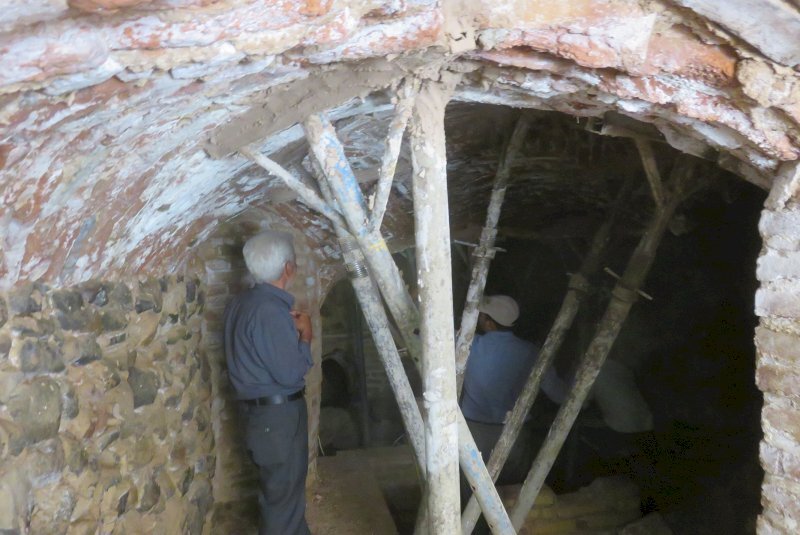Parts of Safavid-era public bathhouse undergo restoration

TEHRAN –Hammam-e Khiruz, a Safavid-era (1501-1736) public bathhouse in Ferdows, South Khorasan province, has undergone some rehabilitation works, a local tourism official has said.
The project involves repairing the damaged parts and strengthening the structure, Aqdas Karampur explained on Saturday.
The historical structure, which has been repurposed into an anthropology museum, has been inscribed on the national heritage list.
Bathhouses or ‘hammams’ in Iran were not only places for bathing and cleaning up. They had a social concept for people who gathered at these places weekly.
It was a place where people talked with each other about their daily life and shared humor and news. There are still bathhouses in Iranian cities but they do not have their social function anymore since most people have bathrooms in their homes due to the modern lifestyle.
Some cities had separate bathhouses for men and women. They were usually built next to each other. However, there were some bathhouses, which were used by men and women at different times of the day.
There were also male and female public bathhouses; at daybreak, a longhorn (booq-e javaz) was blown to announce that the bath was ready. Men came to the baths from daybreak till the afternoon. Women could use the bathhouses from then to sunset. In some cases, five days were allocated to men and two days to women.
Persian literature is full of proverbs, narrations, and folk stories about bathhouses, which indicate the importance of the place in the past time.
South Khorasan is home to many historical and natural attractions such as Birjand Castle, Dragon Cave, Furg Citadel, and Polond Desert. It is also known for its famous rugs as well as its saffron and barberry which are produced in almost all parts of the province.
The province is an explorer’s delight – lots to discover yet barely another visitor to be found, even at the most important sights (despite a decent infrastructure of recently paved roads).
There’s also a wealth of old mud villages that seem to have been left almost complete as though to tempt archaeologists.
ABU/MG
Leave a Comment